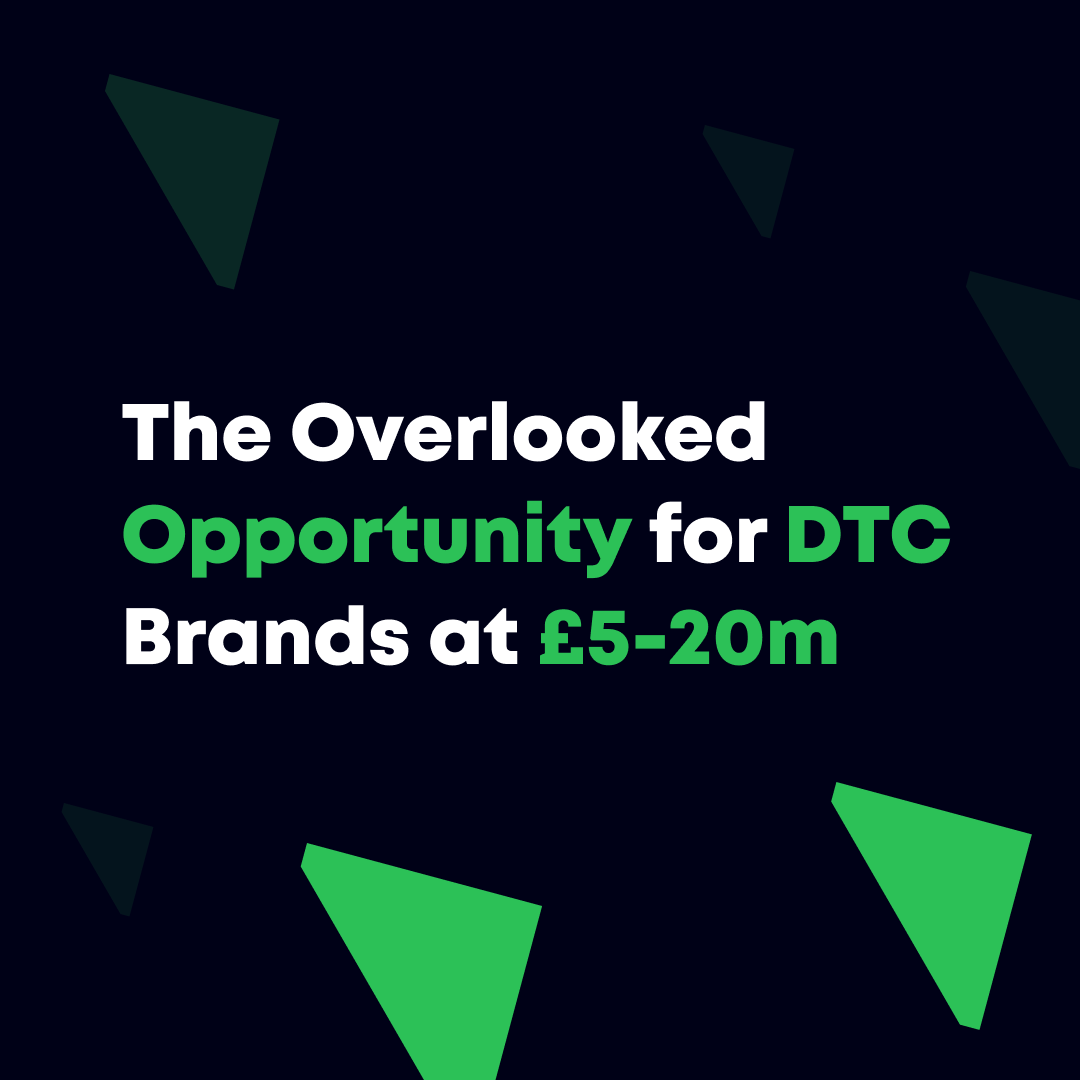Not seeing the results you want from Meta?
Based on 100s of Meta audits in our time, there are a few key mistakes we see being made over and over again.
Take a look at this list put together by our Growth team and make sure none of these are hampering your efforts.
1. Inefficient Account Structure and Audience Overlap
A common mistake we see across Meta accounts is having too many ad sets and not enough events to ensure each ad set gets out the learning phase, compromising the performance of Meta. The learning phase remains a vital consideration when building the optimal structure. Each ad set will need 50 optimisation events per week to get out of the learning phase, so it’s best to ensure your budget is enough to get enough events for each of your ad sets. Use this calculation when planning your Meta structure to ensure each ad set is performing at it’s best: No of ad sets x 50 = Recommended Weekly Budget
This is why a consolidated approach is so useful. Essentially by reducing the number of ad-sets you help campaigns optimise quicker. In fact, this approach is something Meta are making harder and harder to avoid with their new product releases like ASC (Advantage+ Shopping Campaign) which uses a broad audience and combines both prospecting and retargeting into one ad-set. It’s an approach which we have found to produce very strong results, not just in-platform but incrementally for some brands. For more information on how our consolidated approach with ASC has led to successful outcomes, you can refer to our Adv+ PPL case study here.
If you decide not to use an ASC and go with a detailed audience-based approach, avoid overlap by implementing tight exclusions at each stage of the funnel as well as excluding or A/B testing audiences for 14D+. This reduces audience overlap and gives you cleaner data, pivotal when drawing insights and conclusions which can help grow your Meta account. Where possible, ensure you use customer data for exclusions alongside pixel audiences so previous customers do not slip through the net.
2. Tracking and CAPI – Poor tracking will hinder Meta performance
The Meta algorithm relies on millions of data points to make intelligent decisions and ultimately drive the best performance. An accurate tracking set-up is therefore pivotal in giving the algorithm the information it needs to optimise and get the most out of Meta.
By ensuring the whole funnel – page view, add to cart, initiate checkout and purchase at a minimum – are tracking accurately, you will have the most robust insights to understand where people are dropping off but also give the algorithm the data required to improve who it shows ads to. If you want to test that tracking is correct, we recommend creating a test purchase code and using the ‘test events’ tab in Events Manager to see if there are any gaps in tracking at each stage of the customer journey.
Passing data back is just one part of the puzzle. Ensuring the quality of your data being passed back is equally important, and you want to send as many relevant parameters back to Meta as possible when events do occur. You can check this in Events Manager by looking at the ‘event quality’ for each event, Meta will flag any obvious issues with a coloured grading system allowing you to spot any gaps in tracking.
Tracking is now twofold on Meta, not just browser-based from the pixel but also server-based with the Conversions API (CAPI). Since IOS 14.5 this has become even more vital with server-side tracking bridging gaps which are now there in browser tracking through the pixel. This is a vital step to ensure you aren’t missing out on events which could impact account performance. There are a wealth of case studies from Meta on the benefits of CAPI, including a 28% rise in reported conversion events when it is implemented.
One small, but important, nuance: you’ll want to ensure de-duplication of events is taking place so that events are not double counted, which would lead you astray. This can be seen in Events Manager and it’s wise to regularly check that your event set-up is healthy.
3. Underperforming Creative Assets – Lack of creative variation and optimised assets.
Gone are the days where you can rely on subpar or low-volume creative and still get great results, and research from Nielsen even points to creative driving 56% of a campaign’s outcomes. So what are the biggest creative mistakes we see on Meta?
No social-optimised formats
Your content has to be produced with paid social ads in mind. That means everything from technical requirements – like formatting for each placement – through to fundamental marketing requirements – ensuring your ads are engaging people, educating them and incentivising action. To succeed on a social platform in 2023, you need to create content specifically for that platform. Every impression counts and by creating content for the medium in which it’s consumed, you’re increasing the chances of achieving your desired result.
Lack of creative variation
Creative now largely does the targeting for you on paid social, making it more important than ever to make distinct assets to present your products or services in a way that will appeal to distinct customer groups. By incorporating different messaging angles, compelling calls-to-action (CTAs), and varied design elements in your marketing assets, you can effectively capture the attention of different prospects, who care about different things. Ultimately, relying on only one style of creative will limit your ability to attract new customers and you’ll more quickly reach a ceiling. This approach widens your reach and improves your ability to continue growing.
Stay up to date with the trends you hop on
Trends are great if they are relevant to your brand and you can effectively ride them. But the rate at which they come and go can be rapid. If you’re leaving assets live that are now old news, the message you’re sending to your prospects is that you are too. Stay up to date with trends if you can support it operationally and can effectively educate prospective customers on what your product actually is at the same time (don’t forget the fundamentals of advertising). Be wary if you can’t.
4. Poor Creative Testing Strategy
Different people respond to different things and effective creative testing allows you to communicate with different prospective customers in ways that might be more relevant for them. Without going into the nuance of how to technically set up an effective creative testing strategy for your brand, ensure you’re clearly isolating the variables that you are testing. We see time and time again that a brand thinks they’re testing one thing, so goes down the rabbit hole of iterating on what they believed drove a result, but in reality, they were testing something completely different. Keep your tests clean, test concepts that are significantly different from one another, and iterate from there.
5. Unoptimised landing page and poor UI Experience
So, you’ve successfully got users to your site, but you’re still seeing higher drop-offs than you’d like. If you’ve got a great paid media strategy and are sending relevant traffic, your attention needs to turn to your website. Here are a few ways you can help improve your site performance:
- Great Copy – Your copy is paramount in conveying your value proposition effectively and it’s ultimately your messaging that is going to help a prospect decide whether what you’re offering them is worth it or not. Research your customer and then craft compelling copy that speaks directly to them in their own words. This is what’s going to have the most significant impact on engagement and sales.
- Page loading speed – if your homepage doesn’t load within a few seconds, how do you expect your prospects to stay engaged enough to not bounce? Site speed will also have an impact on your SEO ranking and all of your other channels, so it’s extremely important. There are many tools online that you can use that will help you measure your site speed and diagnose the best spots to optimise your site, Google Lighthouse being just one.
- Navigability – ensuring you have a clear navigation structure will make the lives of your site visitors much easier and help to drive them further down the conversion funnel. You can do this through a clear web design, accurate navigation titles or a search bar that produces relevant results.
- Optimising for Mobile – with over 55% of website traffic coming from mobile devices and 92.3% of internet users accessing the internet on their phones, it’s pretty important to make sure your site looks good and navigates well on mobile phones.
By addressing these challenges and implementing what is essentially best practice alone, you stand a much higher chance of seeing success on Meta. If you’d like to take things one step further and customise this specifically for your brand’s unique challenges, then get in touch. We’d love to discuss how we can help you grow.



